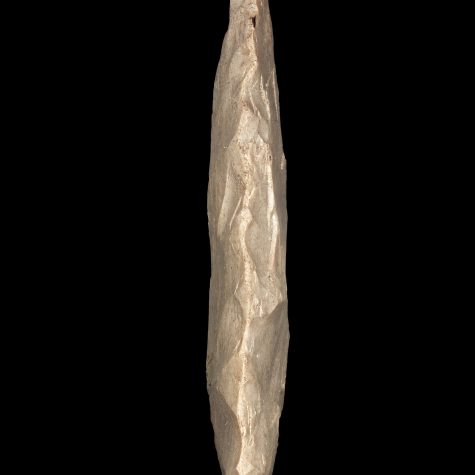Description
The Petrographic Analyzer comes with:
- Analyzer device
- 77mm Circular Rotary Stage
- (2) 77mm Circular Rotary Polarizers
- (1) 58mm Circular Rotary Polarizer
- Power Adapter
- Slide Stage adapters to accommodate Geological Slides (75x50mm), Thin Sections & Petrographic Slides (48x28mm and 47x27mm) and Biological Slides (25x75mm).
The device is made to work with and fit the MT-24EX and MT-26EX-RT Flashes by Canon, the Godox MF12 Wireless Flash by Godox and the YN-24EX Flash by Yongnuo. (Flash is not Required)
The Petrographic Analyzer by Macroscopic Solutions is a specialized imaging system designed for the study of geological specimens, particularly thin sections of rocks and minerals, in a petrographic context. This system integrates advanced imaging techniques with polarized light microscopy to deliver high-quality images and detailed analysis of the optical properties of geological samples.
Key Features and Capabilities:
1. Polarized Light Microscopy (PLM):
The Petrographic Analyzer uses polarized light microscopy, which is essential for studying minerals in thin sections. By passing polarized light through the sample and analyzing how it interacts with different mineral structures, the system reveals optical properties such as birefringence, pleochroism, and extinction angles. These properties help geologists and mineralogists identify minerals and interpret the rock’s formation history.
2. Automated Imaging and Stitching:
The system is equipped with an automated imaging function, allowing users to capture images across the entire thin section of a rock sample. These images can be stitched together to create a comprehensive, high-resolution map of the sample, which is useful for examining large areas without losing detail.
3. High-Resolution Imaging:
With the capability of producing high-resolution images, the Petrographic Analyzer provides exceptional clarity and detail, enabling researchers to study fine-grained textures, mineral inclusions, and microstructures that are critical for petrographic analysis.
4. Quantitative Mineral Analysis:
The system allows for quantitative mineral analysis by providing data on the proportion and orientation of different minerals in a sample. This is important in petrology, where the identification of specific minerals and their relative abundances can reveal the conditions under which a rock formed.
5. 3D Reconstruction:
The Petrographic Analyzer can integrate 3D imaging techniques, allowing for the reconstruction of mineral textures and microstructures in three dimensions. This provides a more complete understanding of the spatial relationships between minerals and helps interpret geological processes such as deformation and recrystallization.
6. Advanced Software for Analysis:
The system includes sophisticated software tools for analyzing the optical properties of minerals. This software can automatically measure key features such as grain size, shape, and orientation, as well as optical characteristics like interference colors and extinction angles.
7. Cross-Polarization Capabilities:
The cross-polarization function enhances the ability to study minerals under different lighting conditions. By rotating the polarizers, users can observe how minerals change appearance with different orientations of light, a critical aspect of petrographic analysis.
Applications:
- Geological Research: The analyzer is used extensively in geological research to study rock formations, understand metamorphic and igneous processes, and interpret the geological history of an area.
- Mineralogy: It’s invaluable for mineral identification, allowing geologists to classify minerals based on their optical properties.
- Educational Purposes: The Petrographic Analyzer is an effective teaching tool in geology and mineralogy courses, offering students hands-on experience in identifying minerals and understanding rock textures.
- Oil and Gas Exploration: Petrographic analysis helps identify reservoir rocks and evaluate their porosity and permeability, which are key factors in oil and gas exploration.
Value in Microscopy:
The Petrographic Analyzer by Macroscopic Solutions is a powerful tool that adds significant value to the field of petrography. By combining high-resolution imaging with advanced polarized light capabilities, it allows researchers to gain deeper insights into the composition, structure, and history of rocks and minerals. Its ability to automate tasks like image stitching and provide quantitative data makes it an essential instrument for both academic research and industrial applications in geosciences.
Hornblende and Plagioclase in Thin Section
This is an image of a geological thin section, which represents the crystalline matrix and composition of a particular rock type. In the past, the only way to see properties such as these would have been to place a paper thin slice of rock onto a polarizing or petrographic microscope, which is distinguished from the more usual biological microscope in that it is equipped with a rotating stage and two polarizing filters – one below the sample and one above it.
Petrographic Microscope
The problem is, polarizing microscopes are expensive and the reason why you’ve never seen images like those shown in the video is because access is limited to geology students and research professionals.
This is a problem considering that many of the most intimidating subjects can be taught and understood in the context of geology. The Andes of South America are mostly made from a rock called Andesite, which contains minerals such as Plagioclase, Pyroxene and Hornblende. These minerals can be further broken down into compounds containing elements such as Calcium, Sodium, Iron, Silicon, Aluminum and Oxygen; only to name a few. This demonstration is one logical approach to instructing young students about atoms.
Similarly, much of what we know about evolution comes from fossils found in the rock record. These rocks contain minerals, structures and other depositional features that provide information about the origin and time of formation. Seeing these features is a thruway to plate tectonics, which is one of Earth’s greatest natural examples of popular mechanics and physics.
So for reasons we’re obviously passionate about, we wanted to develop a low-cost solution to the petrographic microscope that would allow students in primary and secondary schools to experience information that has never been available to them in the past.
Petrographic Analyzer
That’s why we’ve created the Petrographic Analyzer. The Petrographic Analyzer can be used in conjunction with any stereoscope or hand lens. It also allows the user to polarize the slide and rotate the stage. The analyzer is internally illuminated for basic observation applications. This makes observing the sample easy to do with any existing stereoscope, but also provides flexibility when imaging. For example, images can even be taken with a camera phone.
For more professional applications, the observer will never lose context of the sample. This is important for quantitating your observations and provides more flexibility when examining the sample. The windows in the side of the analyzer permit the use of external light sources such as fiber optic lights and other camera flashes. Since all of the light is deflected off of a white surface, the light is diffuse enough to allow for extremely high resolution imaging.
Tax Conditions: We ship to all states and countries that are legally allowed. The buyer is responisble for any duties, taxes, or customs fees occurred in shipping of products. We do not collect VAT/PST/GST/Sales Taxes prior to shipment — you will be responsible for these charges upon delivery based on your regions use tax policies. Thank you for your understanding.




































Reviews
There are no reviews yet.